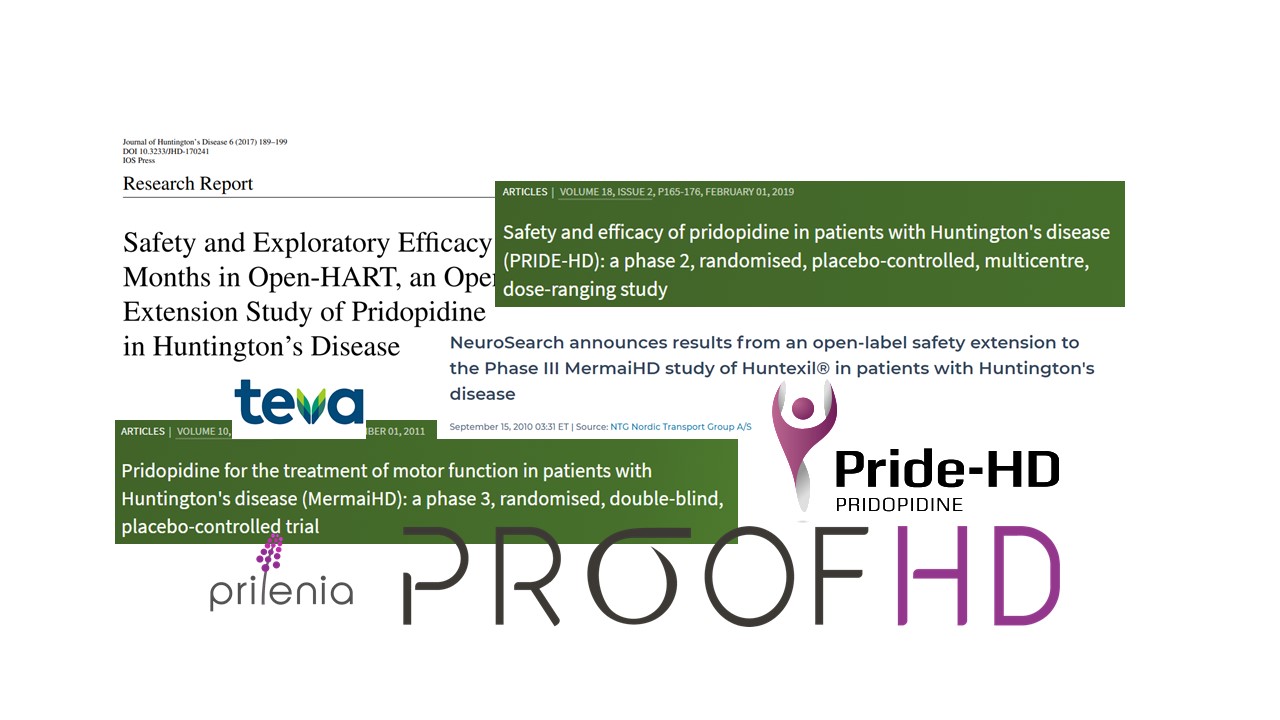
Scientists identify precisely how pridopidine works in models of Huntington’s disease
New studies pinpoint precisely how the drug pridopidine works in models of Huntington’s disease

Pridopidine is a drug developed to treat Huntington’s disease (HD) and now scientists have a clearer understanding of how it works in the body and brain. In a series of academic papers, researchers figured out that pridopidine is working by targeting a particular receptor protein called S1R. With this new understanding, the researchers believe pridopidine could be an effective medicine to help treat neurodegenerative diseases such as HD.
Pridopidine sounds familiar?
The drug pridopidine has been investigated by researchers for a long time now to try and understand how it might be used to treat neurodegenerative diseases and specifically HD. During this time, it has been called a few different things including ACR16 and Huntexil but we’ll be sticking with its current name in this article, pridopidine.

Pridopidine was originally discovered as a medicine which might help treat the motor symptoms of HD and was thought to regulate a chemical called dopamine. Because dopamine is so important for the way our brains control movement and motivation, pridopidine was tested in a few different clinical trials to see whether it could improve motor function in people with HD. These studies included HART, MermaiHD and PRIDE-HD, and they all showed pridopidine was a safe drug to take. They also looked to see if pridopidine improved movement symptoms in hundreds of people with HD, but unfortunately no significant improvement was seen.
You may wonder why there is still interest in this drug if so far the clinical trials did not reach their key goals. Well, one of the reasons is that although pridopidine did not significantly improve motor function in people with HD, the PRIDE-HD study did indicate that a measure called Total Functional Capacity or TFC was better maintained in people with HD. TFC scores measure how well people can function at tasks like managing their households and finances, ability to work, drive, cook, and do other day-to-day activities. Similar promising TFC results were found in the open-label extensions of the HART and PRIDE trials where patients in the original trial continued to take pridopidine for a longer period of time.
There was some controversy amongst scientists when this was originally published as to whether this meant that pridopidine still held promise as a medicine which could slow the progression of HD symptoms, what is often referred to as a disease-modifying therapy.
Pinpointing the precise details of how pridopidine works
At the end of 2020, the company Prilenia began a large Phase III clinical trial called PROOF-HD to test pridopidine in a larger group of people with HD for much longer, to look for conclusive proof of improved TFC. This trial is still in the process of recruiting 480 patients and will run until mid-2023.
At the same time this series of trials has been unfolding, scientists have been busy in the lab working on pridopidine to try and better understand exactly how it might be working. These types of experiments hope to uncover the mechanism of action of pridopidine – a term used by scientists to describe the nitty gritty details of precisely how taking a medicine results in the change in symptoms we hope it provides to patients.
One thing that arose from these mechanism of action studies is that although pridopidine affects the brain chemical dopamine, it was actually having a much stronger effect on a totally different aspect of HD biology, through a chemical receiver called the sigma-1 receptor.
Early insights into these new ideas about how pridopidine works were presented last year at the Huntington Study Group meeting and EHDN conference but are now formally published in peer reviewed scientific journals. The authors of these articles hail from academic institutions around the globe as well as from Prilenia, and they argue that this new data supports the idea that treating people with HD with pridopidine should slow the course of HD.
What does pridopidine do when you take it as a medicine?
Pridopidine is shown in these new papers to target a specific protein called S1R or the sigma-1 receptor. Lots of the S1R protein is found in cells and tissues in the brain, particularly in regions important in HD. The S1R protein is important for lots of different processes which help nerve cells survive under different types of stress. Nerve and brain cells in people with HD are under a lot of different stresses caused by the mutant version of the huntingtin protein which is made because of the HD mutation. Pridopidine may alleviate some of those stresses by targeting the S1R protein, helping these nerve cells to survive.
In people with HD, we know that the energy powerhouses of the cell, the mitochondria, do not work properly, which creates stress for cells in the brain and body. In the first of this series of new academic publications, researchers investigated how pridopidine affected the way mitochondria work in different HD models. When mouse models of HD are treated with pridopidine, it was shown to target S1R which then helps mitochondria to work more normally again. The same effects were also seen in experiments treating HD patient nerve cells in a dish with pridopidine. Overall, this paper suggests that pridopidine restores normal function of mitochondria in different HD models by targeting S1R.
In the second paper, the researchers investigated whether pridopidine relieved another form of stress in nerve cells related to a part of our cellular machinery called the endoplasmic reticulum or ER. One of the ER’s main functions is to act like a factory and warehouse that can churn out proteins and fats and ship them all over the cell. In HD the ER is stressed and stops performing as it should because of the mutant huntingtin protein which slows down production. Pridopidine was shown in this study to improve ER stress in HD cells in a dish. However, if scientists eliminated S1R from the cells, the improvements seen from pridopidine treatment disappeared, suggesting that pridopidine works through S1R. The scientists went on to show that targeting S1R was critical for relieving ER stress in numerous different ways, suggesting that pridopidine was an effective way to relieve this type of nerve cell stress and restore normal nerve cell activity.
In the final paper, scientists reviewed data which shows that S1R is able to associate with cholesterol, a type of fat molecule. They suggest that when cells are treated with pridopidine targeting the S1R protein, this stops association of S1R and cholesterol. Like separating a couple of slacking employees, when S1R and cholesterol can’t associate as much, the ER’s machinery operates more smoothly. This could be responsible for the improvements seen in HD cells and mice given pridopidine.
What’s next for pridopidine?
These recent papers are important in showing that pridopidine is making improvements to different indicators of stress in both cells and animal models of HD. What remains to be seen is whether these improvements observed in the lab can conclusively and convincingly be measured in patients in a clinical trial. This is obviously a much harder experiment to do, but hopefully the PROOF-HD study will give us some concrete answers.
Learn more
Sources & References
For more information about our disclosure policy see our FAQ…


